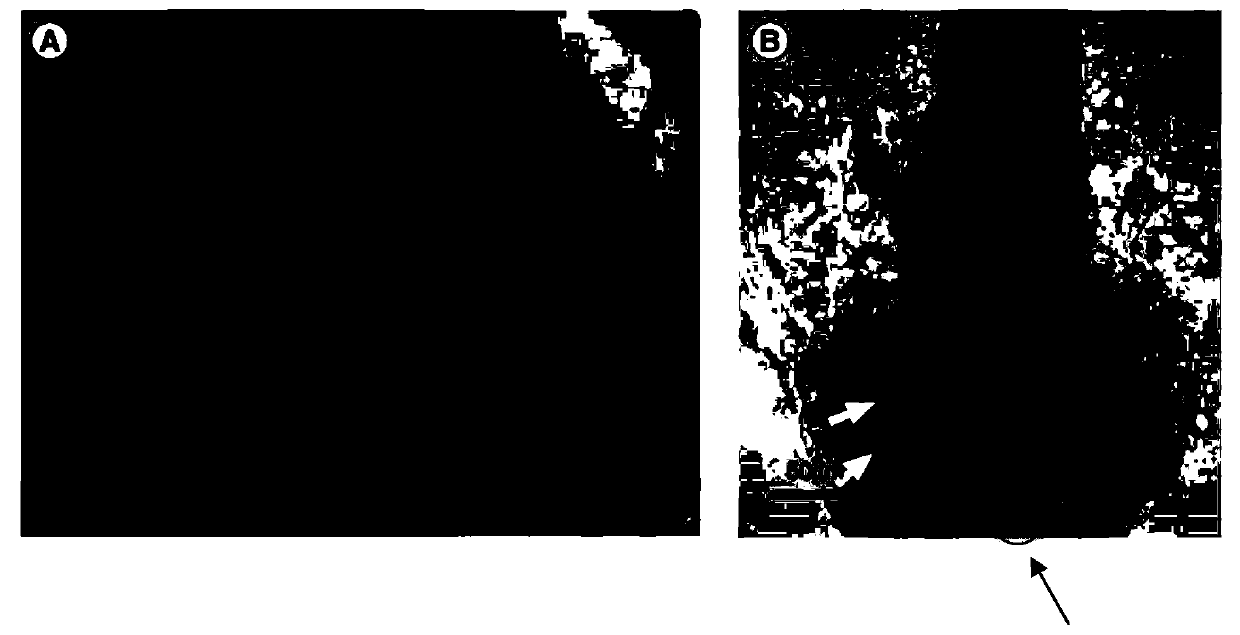Preparation method of cell suspension for promoting hair regeneration and preventing alopecia
A technology of cell suspension and hair, which is applied in the field of cell culture, can solve problems such as insufficient donor sites, affecting surgical results, and limited sources, and achieve the effects of high efficiency, good cell activity, and strong regenerative ability
- Summary
- Abstract
- Description
- Claims
- Application Information
AI Technical Summary
Problems solved by technology
Method used
Image
Examples
Embodiment 1
[0032] Embodiment 1 prepares the cell suspension that promotes hair regeneration and prevents hair loss
[0033] 1. Materials and methods
[0034] (1) Treatment of scalp tissue: cut off the hair outside the scalp and the fat and connective tissue in the subcutaneous tissue, disinfect the collected fresh scalp tissue samples with alcohol for 3 minutes, and then treat them twice with PBS containing 2 times double antibody, each 3 minutes to achieve the purpose of sterilization. Drain the excess liquid from the processed tissue, weigh and make a record, and spread the tissue on a 100mm cell culture dish. Cut the tissue into uniform minces with a scalpel.
[0035] (2) Enzyme digestion: add the chopped tissue into the enzyme digestion solution (20ml enzyme digestion solution for 1g tissue, containing 2.5g / L type Ⅰ collagenase and 2.5g / L dissociating enzyme), and mix well. Digest in a 37°C water bath with 80×g shaking for 60 minutes. Then add 0.25% trypsin solution (5ml for 1g t...
Embodiment 2
[0041]Such as figure 1 As shown, Figure A is the prepared scalp epidermal cells, and Figure B is the cultured dermal papilla cells. Example 2 Experiment on hair regeneration effect of immunized mice injected with cell suspension on the back
[0042] 1. Materials and methods
[0043] (1) Scalp epidermal cells and dermal papilla cell suspension injection
[0044] After cultivating qualified human scalp epidermal cells and dermal papilla cells, according to a certain ratio (in this implementation case, the number of scalp epidermal cells is 1 × 10 6 , the passage is P3; the number of dermal papilla cells is 2×10 6 , the passage is P4) mixed with 75 microliters of F12 medium to prepare a cell suspension. Inject four injections into the back of immunodeficient mice.
[0045] (2) Analysis of hair regeneration
[0046] Twelve weeks after the injection, check the hair follicle regeneration on the mice with a dissecting optical microscope, excise and collect the regenerated skin ...
Embodiment 3
[0050] Example 3 Clinical Trial of Autologous Scalp Tissue-derived Cell Suspension Injection
[0051] 1. Epidermal cell and dermal cell suspension injection
[0052] Select 20 androgenetic alopecia patients aged 30-50 with a course of disease within 2 years, and other healthy men with physical indicators, and sign the informed consent form with the consent of the patients before use. Use a scalpel to take 2*2 cm2 scalp tissue from the patient's occiput, and culture human scalp epidermal cells and dermal papilla cells according to the above-mentioned experimental method. Qualified human scalp hair follicle cells and dermal papilla cells after cultivation, according to a certain ratio (the number of scalp epidermal cells in this implementation case is 2 × 10 6 , the passage is P3; the number of dermal papilla cells is 5×10 6 , the passage is P4) mixed with 75 microliters of F12 medium to prepare a cell suspension. Routinely disinfect the skin of the patient, inject it at mult...
PUM
 Login to View More
Login to View More Abstract
Description
Claims
Application Information
 Login to View More
Login to View More - R&D
- Intellectual Property
- Life Sciences
- Materials
- Tech Scout
- Unparalleled Data Quality
- Higher Quality Content
- 60% Fewer Hallucinations
Browse by: Latest US Patents, China's latest patents, Technical Efficacy Thesaurus, Application Domain, Technology Topic, Popular Technical Reports.
© 2025 PatSnap. All rights reserved.Legal|Privacy policy|Modern Slavery Act Transparency Statement|Sitemap|About US| Contact US: help@patsnap.com



